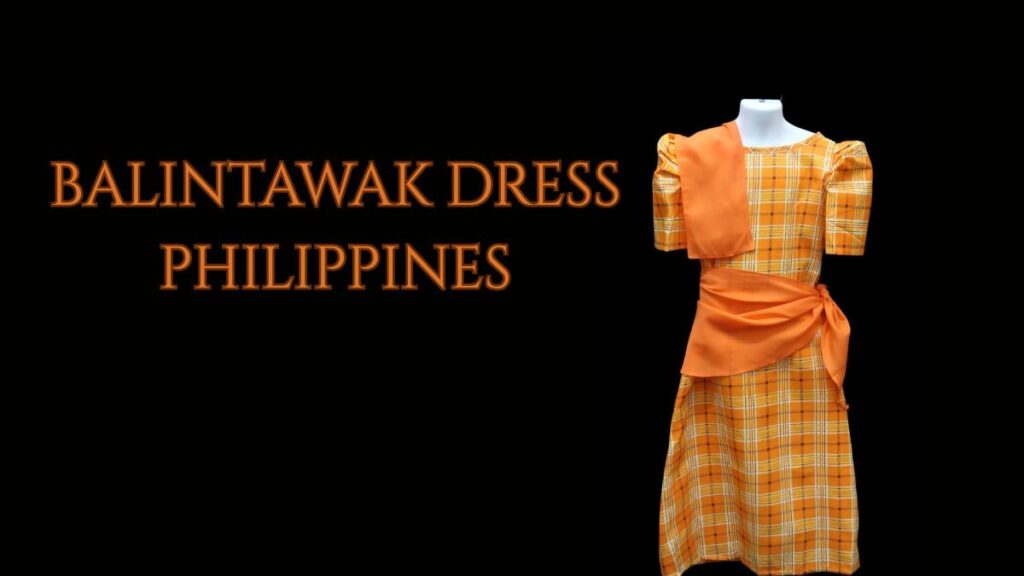What is the Balintawak Dress?
The Balintawak dress is a traditional Filipino attire known for its simple yet elegant style. It originated from rural communities, especially among women who lived in provinces and worked in the fields. The Balintawak features short, puffy butterfly sleeves, a flowing skirt, and a colorful design, making it perfect for both everyday wear and special occasions.
In Filipino culture, the Balintawak dress is more than just clothing—it represents a deep connection to the country’s traditions, history, and values. Today, it remains an iconic piece of the Philippines’ rich cultural tapestry.
The History of the Balintawak Dress in the Philippines
The origins of the Balintawak dress date back to the Spanish colonial era. During this period, Filipino women adapted the elaborate Maria Clara dress into a more practical version for countryside life. While still maintaining elements of elegance and grace, the Balintawak dress was simplified to suit the active lifestyle of rural communities.
Named after the town of Balintawak, which played a key role during the Philippine Revolution, this dress also symbolizes the spirit of independence and national pride. Over time, it became a popular choice for Filipinas who wanted to balance functionality and cultural expression.
Key Features of the Balintawak Dress
The Balintawak dress is easily recognizable because of its unique features:
- Butterfly Sleeves: Distinctive wide, puffy sleeves that offer a grand yet approachable look.
- Alampay or Panuelo: A soft scarf draped over the shoulders, adding a touch of modesty and style.
- Bright Colors and Patterns: Traditional fabrics are often adorned with floral prints and vibrant colors that reflect the cheerful spirit of Filipino life.
- Ankle-Length Skirt: Designed for comfort and ease of movement, especially in rural settings.
Each element of the Balintawak dress reflects the creativity, resilience, and warmth of Filipino women.
The Evolution of the Balintawak Dress Over Time
As fashion trends evolved, so did the Balintawak dress. Designers started incorporating modern touches while preserving its traditional essence. Today, you’ll find Balintawak dresses with updated silhouettes, luxurious fabrics, and intricate embroidery.
In contemporary Philippine culture, the Balintawak dress is often seen in national events, beauty pageants, weddings, and cultural festivals. Its timeless appeal allows it to bridge the gap between tradition and modernity, making it a beloved garment for all generations.
Did you find this article helpful? Check out the rest of our site for more great content!
Importance of the Balintawak Dress in Filipino Culture
The Balintawak dress holds a special place in Filipino culture. It stands as a symbol of national pride, identity, and resilience. Wearing the Balintawak is a way for Filipinas to celebrate their heritage, especially during significant occasions such as Independence Day celebrations, town fiestas, and cultural shows.
Moreover, the Balintawak serves as a reminder of the hardworking spirit of rural women, their role in society, and their contribution to the nation’s development. It embodies the virtues of strength, dignity, and grace—qualities deeply ingrained in the Filipino character.
Where to See and Experience the Balintawak Dress in the Philippines
Visitors to the Philippines can experience the beauty of the Balintawak dress in various cultural events and locations:
- Cultural Festivals: Events like the Flores de Mayo and Santacruzan feature women parading in beautiful Balintawak dresses.
- Museums: Institutions like the National Museum of Anthropology often showcase traditional Filipino clothing, including the Balintawak.
- Fashion Shows: Contemporary Filipino designers regularly include Balintawak-inspired pieces in their collections, presenting a modern take on traditional wear.
- Local Communities: Rural towns during fiesta season often showcase women wearing Balintawak dresses in vibrant processions and performances.
Modern Interpretations of the Balintawak Dress
Today’s designers creatively reinterpret the Balintawak dress, blending traditional aesthetics with contemporary fashion trends. Some modern variations include:
- Shorter hemlines for a more casual look
- Sleeker sleeve designs while maintaining the iconic butterfly shape
- Use of indigenous weaves like piña, abel, and jusi fabrics
- Incorporation of beadwork and lace for a sophisticated touch
These modern Balintawak dresses appeal to younger generations who want to embrace their heritage while expressing personal style.
Expand your knowledge and check out more posts on our blog!
How to Style the Balintawak Dress for Contemporary Wear
Incorporating the Balintawak dress into a modern wardrobe is both stylish and meaningful. Here are a few ideas:
- Casual Events: Choose a Balintawak dress in lightweight fabric with a playful print, paired with simple sandals.
- Formal Gatherings: Opt for a Balintawak with luxurious embroidery and pair it with elegant heels and statement jewelry.
- Cultural Celebrations: Embrace the full traditional look by accessorizing with a panuelo, traditional earrings, and native footwear like the bakya or espadrille.
Wearing a Balintawak today is a beautiful way to honor Filipino roots while staying fashionable and relevant.
Why the Balintawak Dress Continues to Inspire
The Balintawak dress endures because it tells a story—one of resilience, beauty, and the undying spirit of the Filipino people. It represents a bridge between past and present, tradition and innovation.
Many young Filipinos today are rediscovering the Balintawak as they seek to reconnect with their cultural identity. In a globalized world, traditional garments like the Balintawak dress offer a proud reminder of one’s origins and values.
Preserving the Legacy of the Balintawak Dress
Efforts to preserve the Balintawak dress are vital for keeping Filipino heritage alive. Cultural organizations, fashion designers, and educators work hand in hand to promote awareness and appreciation of traditional Filipino attire.
Workshops on traditional weaving, sewing classes focusing on Filipino garments, and public exhibits help ensure that the Balintawak dress remains a living tradition rather than a relic of the past. Each generation has the opportunity—and responsibility—to honor and pass down this rich cultural treasure.
Conclusion
The Balintawak dress Philippines is a vibrant symbol of Filipino identity and pride. Its beautiful design, historical significance, and enduring appeal make it a cherished garment across generations. Whether worn in its classic form or a modern interpretation, the Balintawak continues to inspire admiration and respect for the Philippines’ rich cultural heritage. As the world changes, the Balintawak dress stands as a timeless testament to the strength, beauty, and creativity of the Filipino spirit.
FAQs
What is the Balintawak dress made of?
Traditional Balintawak dresses are made from fabrics like cotton, piña, or abel, often featuring bright prints and embroidery.
Can I wear a Balintawak dress casually?
Yes, modern versions of the Balintawak dress are designed for casual and semi-formal occasions, making them very versatile.
Where can I buy an authentic Balintawak dress in the Philippines?
You can find authentic Balintawak dresses in cultural shops, local designers’ boutiques, and during special festivals.
How is the Balintawak dress different from the Baro’t Saya?
The Balintawak is a simplified, more practical version of the Baro’t Saya, featuring shorter skirts and puffier sleeves.
Is the Balintawak dress only worn by women?
Traditionally, yes. However, some modern designers are experimenting with gender-neutral versions for cultural presentations.
We hope you enjoyed reading this article. If you found it helpful, be sure to check out our fashion blog for more informative resources.







